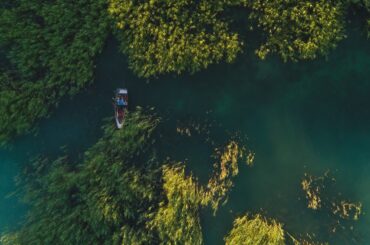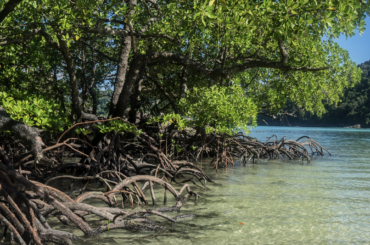
Interview with Yeray Martínez Lead Forest Intelligence at XILVA
Forestry consultant with +20 years of experience. Team leader of over 75 sustainable forestry projects of +100 million euros investment.
Can you tell us a little bit about yourself and your role at Xilva?
My name is Yeray and I am a forestry engineer. I have worked in the design, management, and monitoring of forestry projects across a wide range of topics: sustainable forest management, certification, carbon storage, restoration, protected areas, governance, forest fires, soils, and others. I currently lead the Xilva Forest Intelligence team.
The goal of Xilva is to connect forests to capital faster. Can you elaborate on this? What problems do you aim to solve and how are you different from organizations targeting timber investments?
Although forest projects are one of the most tested, scalable, and cost-effective nature-based solutions, there are challenges in unlocking their full potential. Many of these challenges relate to access to finance.
On the other hand, the amount of money committed to forest investments has increased dramatically over the last 5 years, which is great, but ultimately only a very small part of these funds reaches the ground and generates impact.
We want to solve the bottlenecks that separate these two worlds – forests and finance – by creating a bridge of innovation and digitalization.
Something must change, and this is where we come in. We want to solve the bottlenecks that separate these two worlds – forests and finance – by creating a bridge of innovation and digitalization that streamlines the whole process and brings it into the 21st century.
We want to standardize and digitize as much of the workflow as possible: the matching between capital providers and forest projects, the transaction process (including due diligence), and the monitoring of the entire project lifecycle.
How do you envision balancing the priorities of projects (e.g., long-term sustainability goals) with those of investors (e.g., financial returns)?
We are living in a unique and extraordinary moment, with this global crisis that involves all of us. So these very different worlds, the world of finance and the world of forest landscapes, are coming together to try to create a positive impact. But current approaches have not been adequate.
That is why we are committed to establishing a new approach, and this is our innovation. One of its key aspects is digitalization. Technology provides us with unprecedented tools and resources, allowing us to generate and manage information at great speed.
We want our marketplace to be a vibrant, synergistic ecosystem of abundance, where everyone can find options and opportunities to thrive and deliver positive impact.
Another key aspect is the collaborative-regenerative approach. We have to realize that no single project or zero-emission commitment will create the change that is needed. Big impact happens through collaboration, synergy, care for life, and win-win solutions. We want our marketplace to be a vibrant, synergistic ecosystem of abundance, where everyone can find options and opportunities to thrive and deliver positive impact.
In planning for this goal, we have worked with a series of pioneer partners on both the investor and the forest supply sides. We do know that this value proposition is necessary and in demand.
We aren’t building a platform and asking users to join in the hope that they will use it and that it responds to their needs. Everything will happen through a process of co-creation.
We are currently at a very early stage, mapping both ecosystems (capital and forest projects) and trying to find the pioneers and early adopters, all through a process of co-creation and collaborative prototyping. We aren’t building a platform and asking users to join in the hope that they will use it and that it responds to their needs. Our strategy is to build a platform together with the users and for the users, a platform that works for them.
Throughout this process, we hope to generate value from the beginning, for all the actors involved, so that they can feel the benefits of getting on board. We aspire to generate a virtuous circle that will allow actors to find forests and deploy funds, allowing us to move forward with the platform development stage.
In the Xilva Partnership Policy, the principle of transparency is mentioned first. What mechanisms are in place for achieving this?
For starters, we emphasize this principle in every collaboration that we establish. But as we build our platform, it will also be integrated into the terms and conditions, and as a central feature.
Xilva has started collaborating with OpenForests on funding projects on explorer.land. How can projects reach out to you and what service can they expect?
As a first step, we are focusing on generating real transactions in order to learn and have a deeper understanding of how they are happening and what specific value we can create through digitalization. To do this, we are approaching many capital providers (impact investors, companies with climate commitments, donors, etc.) who are interested in forests, and we are also mapping the global ecosystem of forest projects.
When an opportunity arises, we identify suitable projects that meet the requirements of the capital providers, we present them to see if a match can happen, and then, if all goes well, we start the transaction process as a facilitator.
We are building a portfolio of valuable projects to offer and showcase upfront. We have our own area set up on explorer.land so that projects can reach us directly.
We are building a portfolio of valuable projects to offer and showcase upfront. We liaise directly with project promoters to establish a good relationship with them, which would also allow us to move quickly when an opportunity arises. That’s why we found it so interesting to partner with OpenForests and potentially reach out to all the projects on explorer.land.
We now have our own area set up on explorer.land so that projects can reach us directly by connecting their project to us through their explorer.land dashboard. They can also upload a first summary of their project and funding needs through the form on our website here.
Could you share some current projects that you are working on?
Sure, we have several. For example, we are working on bringing funding opportunities to the Gula Gula Food Program (Indonesia) and the Fundación Oso Pardo (Spain), and to some project developers in Central and South America. We are collaborating with the Landscape Finance Lab and are exploring the Ibero-American Model Forest Network to connect to the projects they coordinate or promote.
What are your goals for the coming months?
In the coming months, we will be working on several things in parallel. We will continue to explore the blockages and ‘pains’ experienced by capital providers and project developers in generating real transaction opportunities in the quest of fully understanding the needs of both parties. Based on these findings, we will establish the digital roadmap for developing our modular prototype which will address the most pressing needs. And lastly, we are preparing to launch a seed funding round for Xilva to give us the necessary resources for developing the product.







